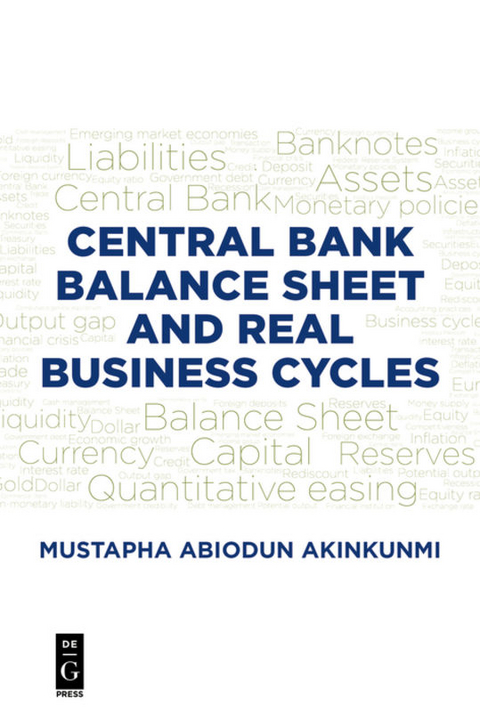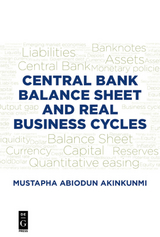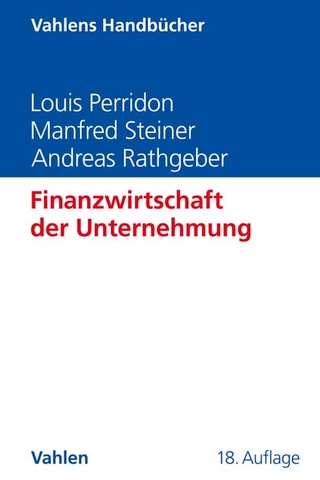Central Bank Balance Sheet and Real Business Cycles
Mustapha Abiodun Akinkunmi, PhD, is a Financial Economist and Technology Strategist. He has over twenty-five years of experience in estimation, planning and forecasting using statistical and econometrics methods, with particular expertise in risk, expected utility, discounting, binomial-tree valuation methods, financial econometrics models, monte carlo simulations, macroeconomic, and exchange rate modeling. He has done extensive software development on quantitative analysis of capital markets, revenue and payment gateway, predictive analytics, data science and credit risk management. Dr. Akinkunmi has implemented change management programs and institutional development initiatives in both public and private sector organizations and has served in high profile positions as a Consultant, Financial Advisor, Project Manager and Business Strategist to AT&T (Bell Labs), Salomon Brothers, Goldman Sachs, Phibro Energy, First Boston (Credit Suisse First Boston), World Bank, Central Bank of Nigeria and Information Connectivity Solutions Limited. He is an internationally recognized author and leader in demand analysis, specializing in working with very large databases. Dr. Akinkunmi is the founder of Technology Solutions Incorporated (TSI) in New York, which focused on data science and software application development for clients including major financial services institutions. He has conducted teaching and applied research in areas that include analyses of expenditure patterns, inflation and exchange rate modeling for Manhattan College, Fordham University and American University, Yola, Nigeria.
Chapter 1: Global Genesis of the Central Bank 1
1.1 Origin of the Central Bank 1
1.2 Roles of the Central Bank 1
Questions 3
Chapter 2: Relevance of the Central Bank Balance Sheet 5
2.1 Understanding Relevance of Central Bank Balance Sheet in Functions of
Economy 5
2.1.1 Similarities and Differences between a Company’s Balance Sheet
and a Central Bank Balance Sheet 5
2.2 Trajectory Relevance of the Central Bank Balance Sheet 8
2.3 Externality of the Central Bank Balance Sheet Size 12
Questions 13
Chapter 3: Components of Central Bank Balance Sheets 15
3.1 Factors Influence the Reporting Frequency of Central Bank Balance
Sheets 17
3.2 Components of Central Bank Assets and their Composition
Analysis 18
3.2.1 Foreign Assets 18
3.3 Components of Central Bank Liabilities and their Composition
Analysis 20
3.3.1 Banknotes 21
3.3.2 Commercial Bank Reserves 23
3.3.3 Capital 23
Questions 25
Chapter 4: Analytical Framework of Central Bank Balance Sheets 27
4.1 Structure of Central Bank Balance Sheets 27
4.2 Balance Sheet Indicators 28
4.2.1 Computation of Indicators 28
4.2.2 Significance of these Indicators 29
4.2.3 Underlying Assumptions of Four Indicators 29
4.3 Determinants of Central Bank Balance Sheet Composition 30
4.4 Classification of Central Bank Balance Sheet Components 31
4.5 Theoretical Landscape: Quantity Theory of Money versus Quality Theory
of Money 32
4.5.1 Quantity Theory of Money 32
4.5.2 Quality Theory of Money 34
Questions 39
Chapter 5: Evolution of Central Bank Balance Sheets and Their Heterogeneous
Dimensions 41
5.1 What Makes Central Bank Balance Sheets Special? 41
5.2 Historic Uses of Central Bank Balance Sheets 43
5.3 Composition of Central Bank Balance Sheet Liabilities 44
5.3.1 Central Bank Liabilities in Normal Times 45
5.3.2 Snapshot of Selected Economies’ Performance before the
2007–008 Crisis 46
5.3.3 Country-by-Country Snapshots of Economic Structure Since
2005 47
5.3.4 A Look at the Balance Sheets: 2005 and 2006 56
5.3.5 Snapshot of Selected Economies’ Performance during the
2007–008 Crisis 65
5.3.6 Snapshot of Selected Economies’ Performance Today 74
5.3.7 Central Bank Liabilities Today 78
Conclusion 86
Questions 86
Chapter 6: Composition of Central Bank Balance Sheet Assets 87
6.1 Central Bank Assets in Normal Times 87
6.1.1 Central Bank Assets of Emerging Economies 95
6.2 Central Bank Assets During the 2007–2008 Crisis 96
6.2.1 Central Bank Assets of Developing and Emerging Economies
during the 2007–2008 Crisis 104
6.3 Central Bank Assets Today 104
6.3.1 Central Bank Assets of Emerging Economies Today 112
6.4 Asset-Side Composition and Economic Growth Nexus 115
6.4.1 Asset-Growth Nexus before the 2007–2008 Crisis 115
6.4.2 Asset-Growth Nexus during the 2007–2008 Crisis 116
6.4.3 Asset-Growth Nexus after the 2007–2008 Crisis 116
6.5 The Evolution of Central Bank Balance Sheets in the Future 117
Questions 119
Chapter 7: Financial Ratios of the Central Bank Balance Sheet 121
7.1 International Strength 121
7.2 External Strength Ratio 122
7.3 External Impact Ratio 123
7.4 Liquidity Ratios I, II, and III 123
7.4.1 Liquidity Ratio I 124
7.4.2 Liquidity Ratio II 124
7.4.3 Liquidity Ratio III 124
7.5 Equity Ratio 125
Questions 126
Chapter 8: Central Bank Operations 127
8.1 Types of Central Bank Operations 127
8.1.1 Supply Liquidity 127
8.1.2 Absorb Excess Liquidity 127
8.1.3 Asset Securities 128
8.1.4 Off Balance Swap 131
8.2 Central Bank Policy Instruments 131
8.2.1 Open Market Operations 131
8.2.2 Reserve Requirements 132
8.2.3 Discount Rate 134
8.2.4 Money Market Investor Funding Facility 135
8.2.5 Term Auction Facility 136
8.2.6 Commercial Paper Funding Facility 137
8.2.7 Primary Dealer Credit Facility 140
8.2.8 Recap of Policy Instruments 141
Questions 141
Chapter 9: Real Business Cycles 143
9.1 The RBC Model 143
9.1.1 Features of RBC Models 144
9.1.2 Basic Economic Factors 145
9.1.3 Fluctuations in the Business Cycle 145
9.1.4 Boom and Recession 145
9.2 Concept of RBCs Applied to Economic Policy 149
9.3 Techniques of Estimating RBCs 150
9.4 Methods to Estimate Potential Output and Output Gaps 151
9.4.1 Trending Methods 152
9.4.2 Univariate Filters Method 153
9.4.3 Multivariate Filters 156
9.4.4 Production Function Approaches 157
9.4.5 Criteria for Evaluating Different Methods of Estimating Potential
Output 161
Questions 165
Chapter 10: Central Bank Balance Sheets and Real Business Cycles 167
10.1 Linkages between Central Bank Balance Sheets and Real Business
Cycles 167
10.1.1 Monetary Policies and Business Cycles 168
10.1.2 Identifying an Acceptable Range of Values 169
10.1.3 Asset Transparency 170
10.2 Impact Evaluation of Central Bank Balance Sheets on Economic
Environment 171
10.2.1 Central Bank Balance Sheets and Debt Management 172
10.2.2 Modeling Challenges Confronting Central Bank Balance
Sheets 173
Questions 177
Chapter 11: Conclusion 179
Questions Left Unanswered: Areas for Future Research 180
Policy Debates 181
Appendix I: Central Bank Balance Sheets of Different Countries 183
Asia Region 183
Malaysia’s Central Bank Balance Sheets for the Month of February
2018 183
Monetary Authority of Singapore 184
Africa Region 185
Nigeria’s Central Bank Balance Sheets for the Month of November
2017 185
South America 186
Central Reserve Bank of Peru 186
Brazil 188
Chile 189
Argentina 190
North America 193
Mexico 193
Canada 194
United States 195
Appendix II: Abbreviations 197
References 199
Index 205
| Erscheinungsdatum | 12.09.2018 |
|---|---|
| Zusatzinfo | 5 Tables, black and white; 5 Illustrations, black and white |
| Verlagsort | Boston |
| Sprache | englisch |
| Maße | 155 x 230 mm |
| Gewicht | 395 g |
| Themenwelt | Sachbuch/Ratgeber ► Beruf / Finanzen / Recht / Wirtschaft ► Wirtschaft |
| Technik ► Architektur | |
| Wirtschaft ► Betriebswirtschaft / Management ► Finanzierung | |
| Betriebswirtschaft / Management ► Spezielle Betriebswirtschaftslehre ► Bankbetriebslehre | |
| Wirtschaft ► Volkswirtschaftslehre ► Finanzwissenschaft | |
| Wirtschaft ► Volkswirtschaftslehre ► Ökonometrie | |
| ISBN-10 | 1-5474-1667-X / 154741667X |
| ISBN-13 | 978-1-5474-1667-7 / 9781547416677 |
| Zustand | Neuware |
| Informationen gemäß Produktsicherheitsverordnung (GPSR) | |
| Haben Sie eine Frage zum Produkt? |
aus dem Bereich




